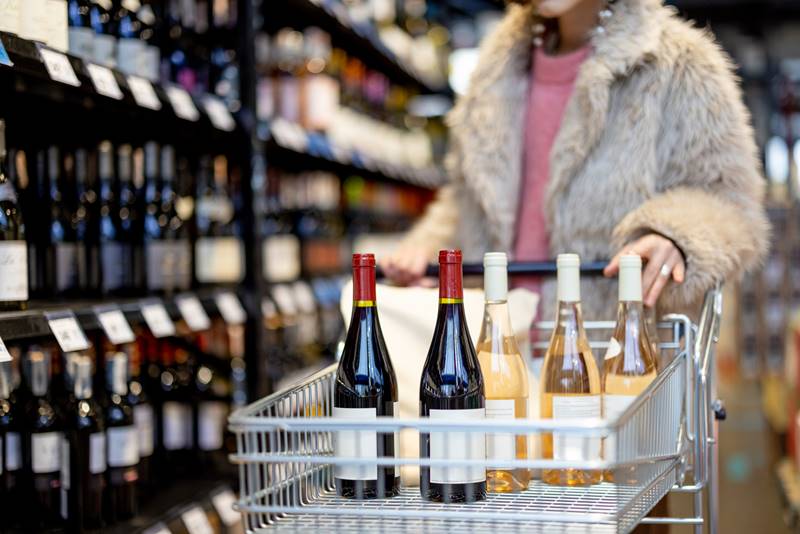Fears are growing in the wine industry that U.S. health authorities may soon classify wine as unsafe for consumption in any quantity. If you thought times were tough for the wine industry, brace yourself—your worst nightmare is just around the corner. Next year, the U.S. government’s dietary guidelines could confirm that there is no safe level of alcohol consumption.
The World Health Organization made this statement last year, and analysts linked it to a decline in global wine sales. But for a non-Muslim government like the United States—the world’s largest wine market—to take such a stance would be devastating. Imagine if the United States treated alcohol the way Saudi Arabia does. The consequences for the wine industry would be enormous.
Currently, the U.S. Dietary Guidelines say men can safely have two drinks a day, while women can have one. But what if those guidelines changed dramatically? A survey of 2,000 American drinkers last year by Wine Opinions paints a worrying picture. According to Wine Opinions CEO John Gillespie, when asked if they would change their drinking habits if the guidelines were as strict as Canada’s (which recommends no more than two drinks a week), 66% of respondents ages 21 to 39 said they would cut back on alcohol.
“The current guidelines are already anti-alcohol,” said Michael Kaiser, executive vice president of Wine America. “They recommend not starting to drink if you haven’t already, and they highlight the potential health risks of alcohol. However, they also state that the current drinking guidelines are safe for healthy adults. If these guidelines change, we are likely to see a significant decline in consumption, especially among younger consumers, which is really concerning. Wine could become something reserved for special occasions only.”
Tom Work, executive director of the National Wine Merchants Association, recently revealed on his blog that a “reliable source” had seen the proposed wording of the 2025 Dietary Guidelines, which suggests there is no safe level of alcohol consumption. While Work did not disclose his source, the potential change has members of Congress concerned.
Last month, the House Oversight and Accountability Committee sent a letter demanding documents used in its review of the relationship between alcohol and health. The committee alleges that the National Academies of Sciences, Engineering, and Medicine, which is supposed to review the guidelines, is not following the science. Instead, the review process has been handed over to the Interagency Coordinating Committee on Underage Drinking Prevention.
Moderation and Politics: A Volatile Mix
This process mirrors how the WHO’s anti-alcohol statement came about. Wine Business Monthly journalist Felicity Carter highlights how the WHO’s stance on alcohol was influenced by Movendi, an international anti-alcohol group founded in 1851. Research showing that moderate alcohol consumption can be healthier than complete abstinence (the J-curve effect) was ignored in favor of studies highlighting the dangers of alcohol abuse.
A recent anti-alcohol conference in a suburb of Washington, D.C., exacerbated the situation, with a panel titled “Alcohol and Cancer: A New Strategy for Litigation Against Big Producers.” It suggests a future in which wine producers could be sued like tobacco companies.
History of food policies
Controversy over government dietary guidelines is nothing new. In 1981, President Ronald Reagan’s USDA tried to classify ketchup as a vegetable in an effort to cut public school lunch budgets. Although that didn’t happen, the USDA still considers pickles a vegetable to this day. However, the policies surrounding alcohol are unique and make for some strange friendships.
Current presidential candidates Joe Biden and Donald Trump claim to have never touched alcohol because of their family histories of alcoholism. Trump’s brother died of alcohol-related causes, and Biden’s son, Hunter, had serious drug addiction issues. It’s not hard to imagine either candidate supporting stricter guidelines on alcohol.
Congressional Concerns and Industry Reactions
The letter to the National Academies was led by House Oversight and Accountability Committee Chairman James Comer (R-Ky.) and House Health Care and Financial Services Subcommittee Chairwoman Lisa McClain (R-Mich.). Comer, known for his efforts to impeach Biden, represents Kentucky, a major whiskey-producing state. McClain, a staunch Trump supporter, is also Catholic — a religion that famously kept a low profile even during Prohibition.
Comer did not respond to requests for comment, but Mike Thompson (D-Calif.), who represents Napa County and co-chairs the House Wine Committee, expressed concerns: “It is disturbing that the agencies reviewing our dietary guidelines are not using the best science and are not transparent. Any changes must be based on solid scientific evidence.”
The new dietary guidelines aren’t due until 2025, but the industry isn’t going to sit idly by. Tom Work suggests now is the time to call your congressional representatives to voice your concerns. And maybe, just maybe, offer to buy them a drink while you do it.
The next few years could redefine our relationship with wine. Whether wine becomes a rarity or remains a favorite food in American culture depends on the ongoing battle between science, politics, and public opinion. So, wine lovers, stay informed and raise your glasses—responsibly.


